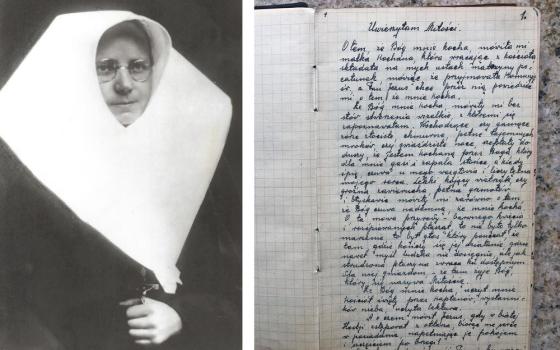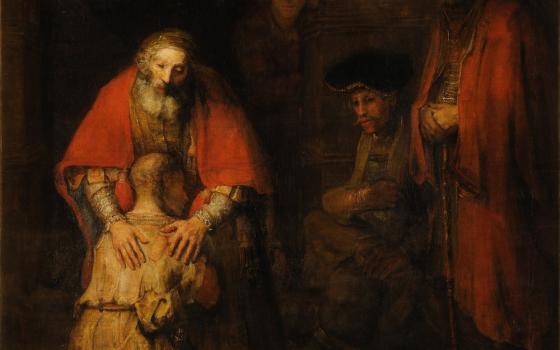A court filing by a Los Angeles attorney that claimed rampant fraud in accusations of abuse against Catholic priests set some segments of the blogosphere buzzing earlier this month. But close examination of the filing found scant evidence to support the claims.
In a Jan. 2 posting, TheMediaReport.com described a “stunning” 10-page declaration by attorney Donald H. Steier that “revealed that many accusations are completely false.” TheMediaReport.com identifies itself as a media watchdog exposing anti-Catholicism and bias.
Steier represents more than 30 living and dead priests who were accused of sexual abuse. Documents regarding these priests and others are among thousands of pages of personnel files and correspondence that are currently being reviewed in an ongoing process that should lead to the release of documents related to the $600 million settlement that the Los Angeles archdiocese made in 2007 with hundreds of alleged victims of clergy abuse.
The principal reason for the “special appearance” filing by Steier appears to be a request that Steier be notified should the court order an “in camera” review of the files of any of his clients, some of whom remain unnamed. He states in the document that “it is essential that I be provided with copies of my clients’ files” in order to further petition the court in attempting to protect his clients’ privacy.
While his claims of fraudulence seem to relate to his concerns over privacy of his clients, he makes no specific references to priests he thinks may have been incorrectly accused, nor does he provide any specific numbers or studies to back up his claims.
He said that he, members of his staff, and private investigators have looked into cases involving “some dozens” of priests since 1982 and that in “a number of cases” he has had accused priests take lie detector tests. In “many cases,” he asserts, without providing a number, polygraph examinations “showed my clients’ denial of wrongdoing was ‘truthful.’ ”
In some cases, he has sought to have accusers take the same tests, but none has agreed to do so.
Without giving any particulars, he said he has “seen the stories of some accusers change significantly over time, sometimes altering years, locations, and what activity was alleged.” He does not say how he learned that the stories changed, whether it was by anecdote or sworn testimony.
He bolsters his claim that accusations against priests may have been bogus by stating the opinion of an unnamed, retired FBI agent who “told me, in his opinion, about ONE-HALF [emphasis in original] of the claims made in the clergy cases were either entirely false or so greatly exaggerated that the truth would not have supported a prosecutable claim for childhood sexual abuse. I also recall that the U.S. Justice Department reported a study it did regarding convictions for felony sexual assault, and found that slightly more than 30 percent of the convicts were factually innocent.” Steier’s declaration did not cite the report by name or date.
Patrick Wall, a former Benedictine priest and a canon lawyer who now works as a senior consultant for a California law firm that has represented hundreds of alleged victims, said it is important to understand that Steier never had the opportunity to defend individual priests against possible bogus claims because the archdiocese in 2007 opted to deal with the problem in one massive settlement. The diocese paid out more $660 million to 508 plaintiffs.
The advantage to the archdiocese, said Wall, was that Cardinal Roger Mahony did not have to get into the witness stand to testify and the diocese did not have to disclose documents in open court. Instead, as part of the settlement, the archdiocese agreed to release documents after they had been reviewed by an independent judge. That process has been stalled for various reasons for the past four years, and the documents -- which might well shed light on whether claims against accused priests are true -- have yet to be released to the public. They have, however, been used repeatedly in other legal actions.
“Someday they will be released,” said Wall, “and then you [journalists] will have a lot to chew on. You’ll have an idea what we were all looking at in 2007 and why we were confident in going to trial.”
Mahony, in a 2007 interview with NCR senior correspondent John L. Allen Jr., dismissed the analysis that he was trying to avoid a trial, saying that it was the insurance companies that backed out. “Part of our strategy, and our settlement judge knew this all along, is that the only way to get insurance companies to settle is if it would cost them more not to settle. The only way that can happen is to get a verdict from a jury,” Mahony told Allen at the time. So the diocese chose initial cases for trial that had “high coverage totals,” he said, and set them for trial, knowing that the insurance companies would opt to settle. So while the archdiocese indeed set the original trial dates, Mahony seemed to confirm that the move was part of a strategy designed to avoid a trial.



